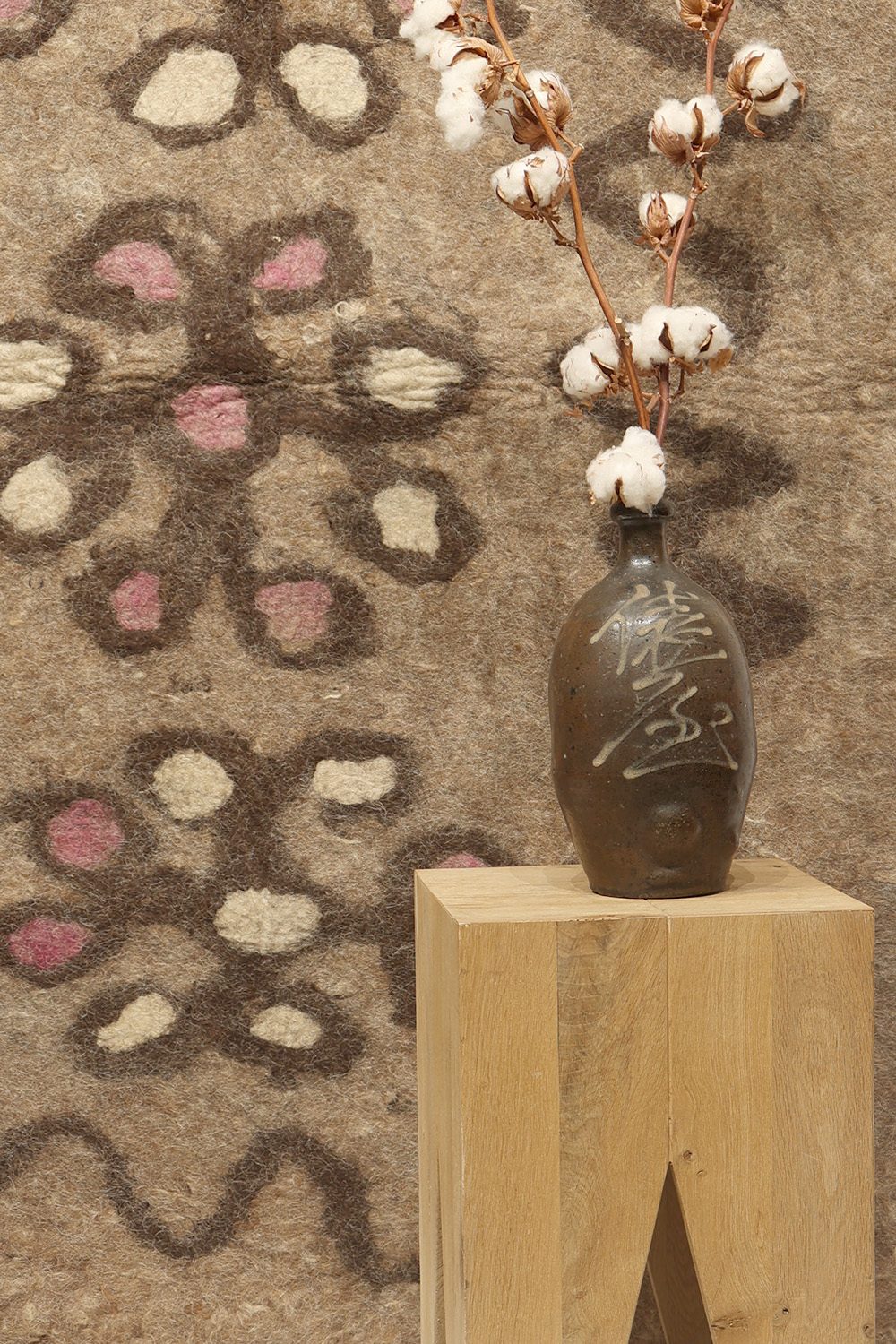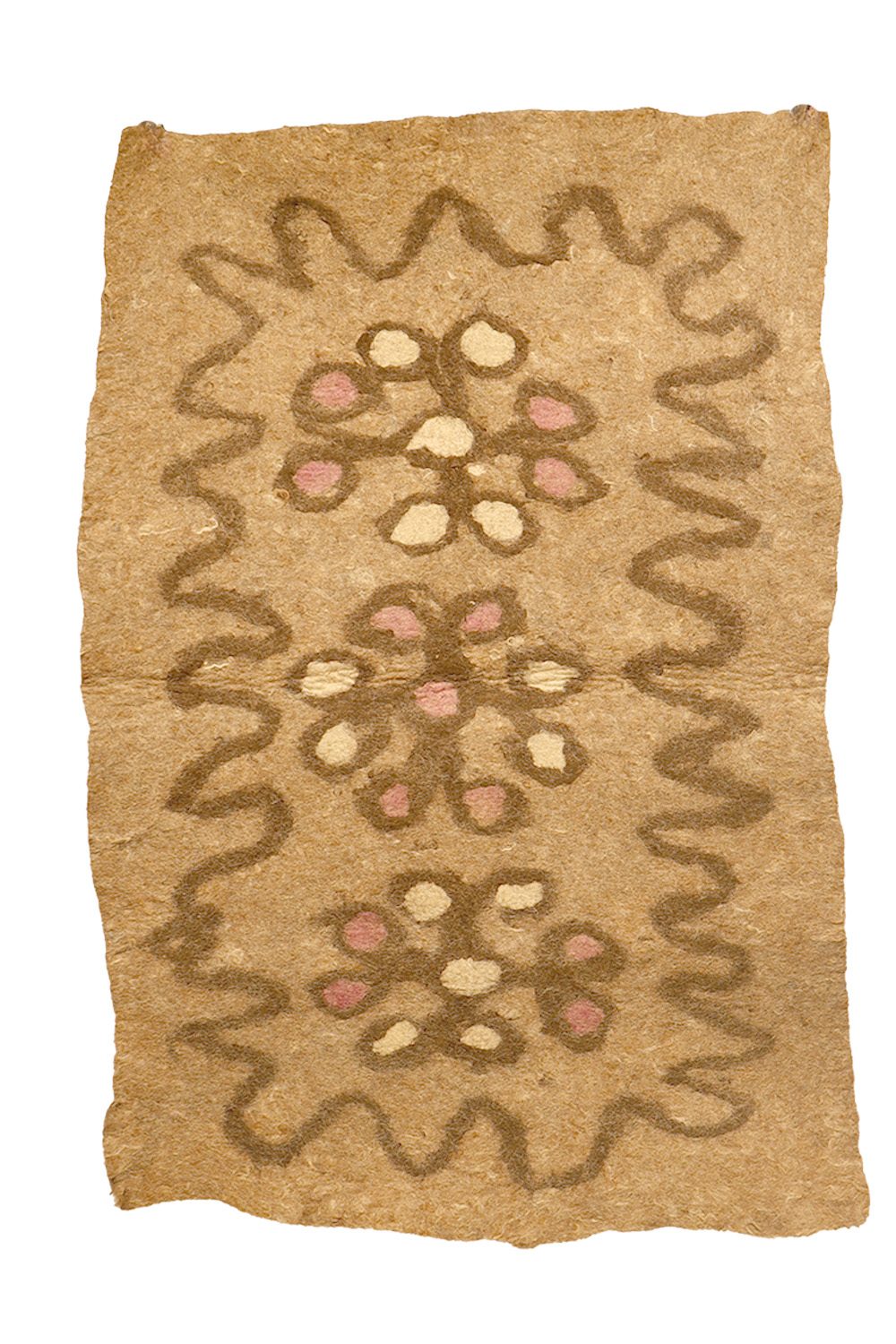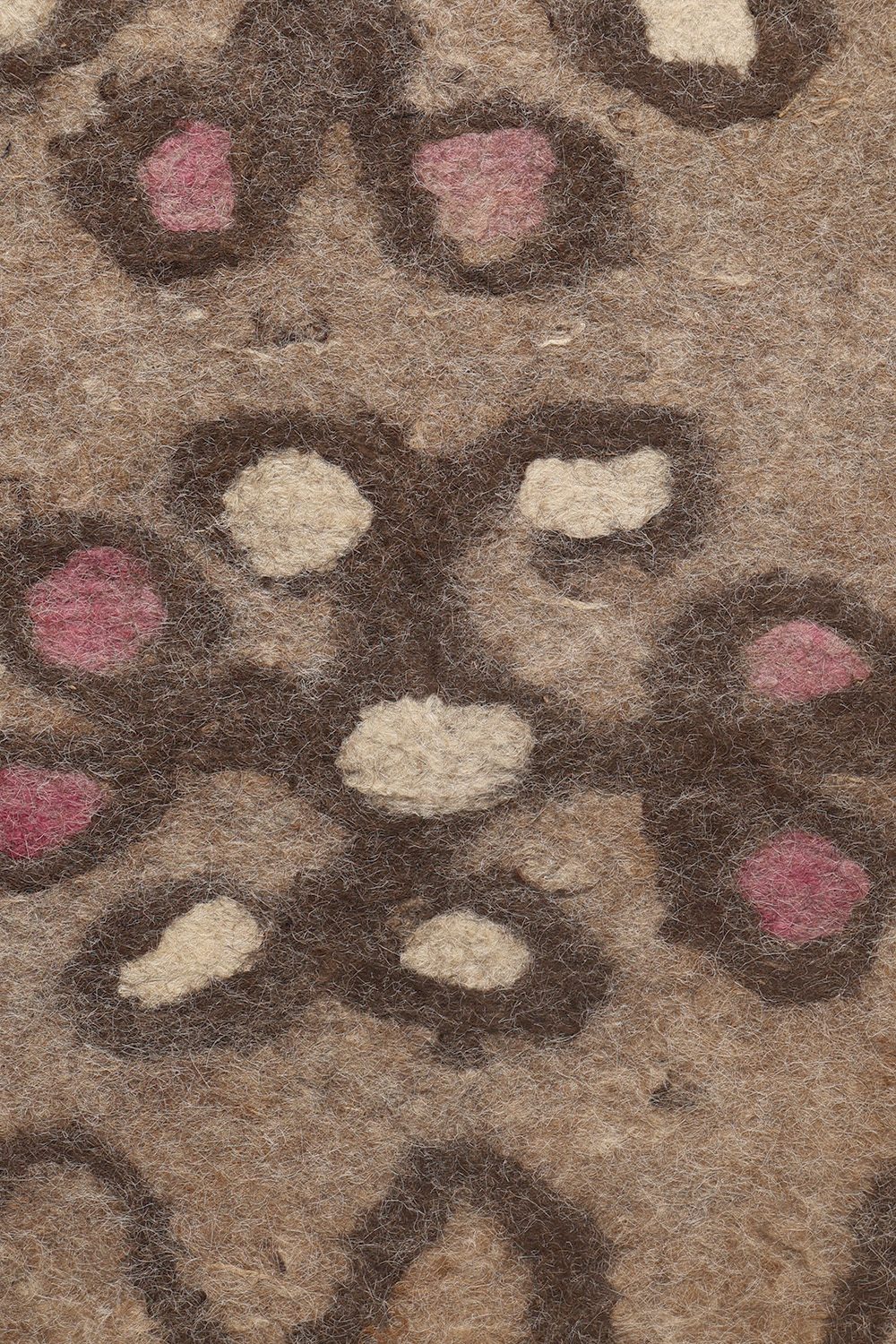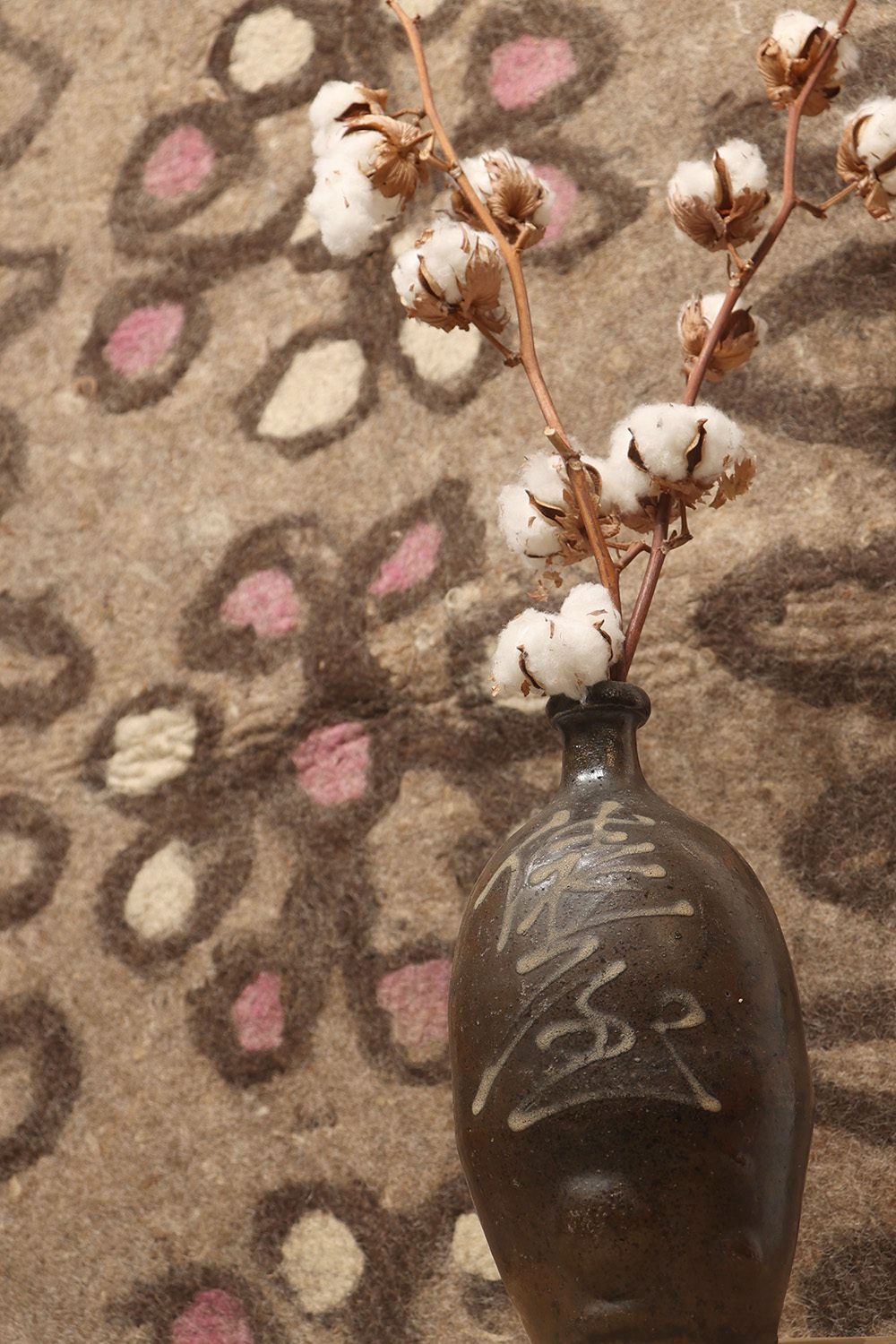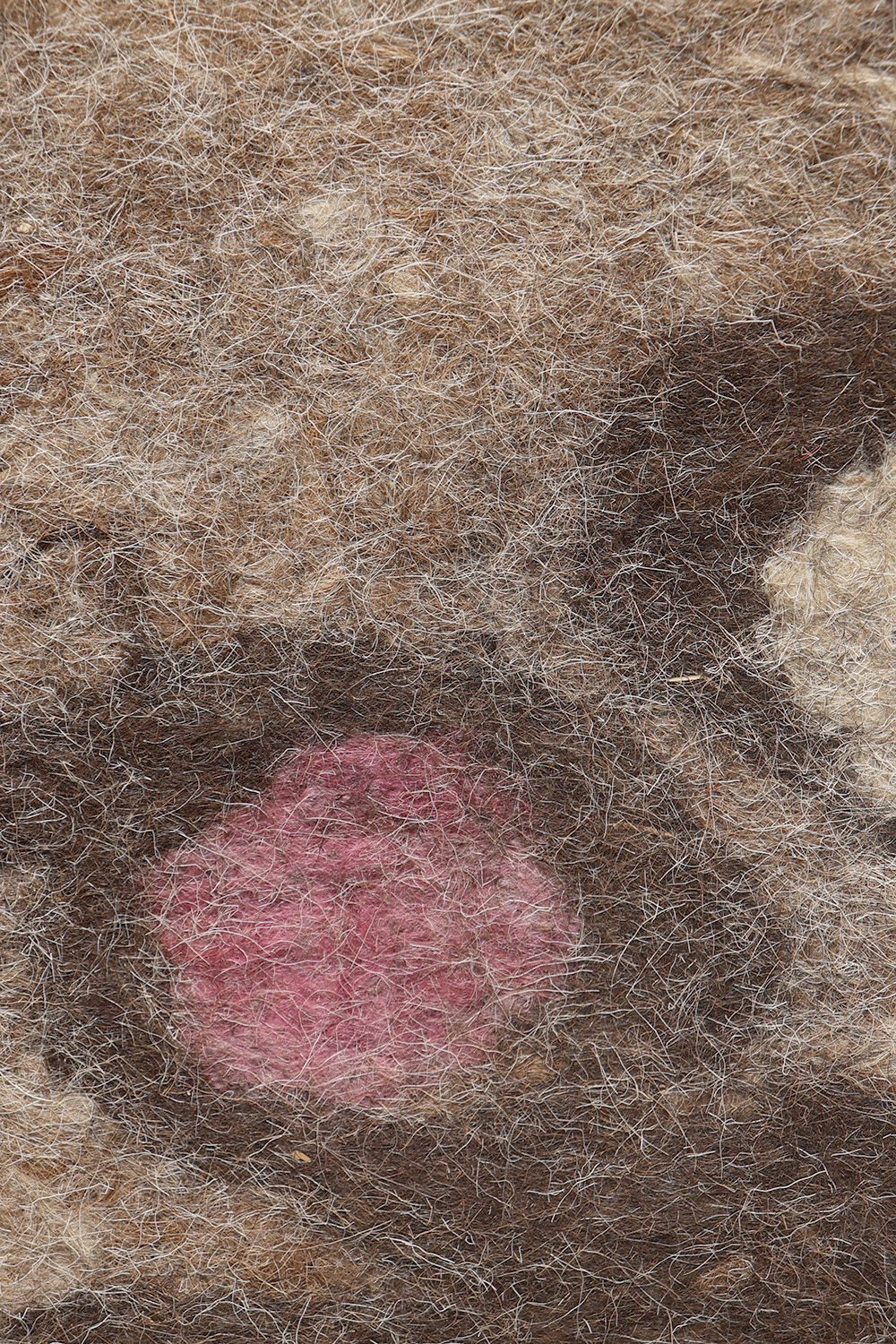A contemporary Baluch felt made with mainly undyed wool.
Material: 100% hand-spun sheep wool
Size: 163×109 cms
Origin: Baluch tribe from Afganistan
Date of weaving: New
Felt (namad, in Farsi) has accompanied the lives of nomads in a vast geographical area, including Turkmenistan, Iran, Uzbekistan, Kazakhstan, Kyrgyzstan and Afghanistan, for thousands of years.
FELT is a material produced by process of felting, the entanglement of animal fiber in all directions, appropriately done to form a soft and homogeneous mass. The technique was originally devised in nomadic communities of Central Asia , spreading toward China and the Greek world well before the 3rd century B.C.E., but for a long time confined to the Asian continent. It was in the wake of the avant-garde movements’ attraction to the so-called ‘primitive’ arts that the archaic and mysterious character of the patterns of felts aroused the interest of artists, collectors and interior designers.
Due to environment and traditional conditions of the traditional Baluch life of the felt rugs were and still are one of the most needed items in the household. Felt rugs were affordable and available to ordinary people. Felt sheets were used to cover the nomadic dwelling—the tent and to cover the ground inside it.
Thanks to the the sheep’s wool insulating properties, the felt keeps the premises warm. There is also the belief that rugs made from lambswool are good for one’s health.
| Weight | 9.5 kg |
|---|
